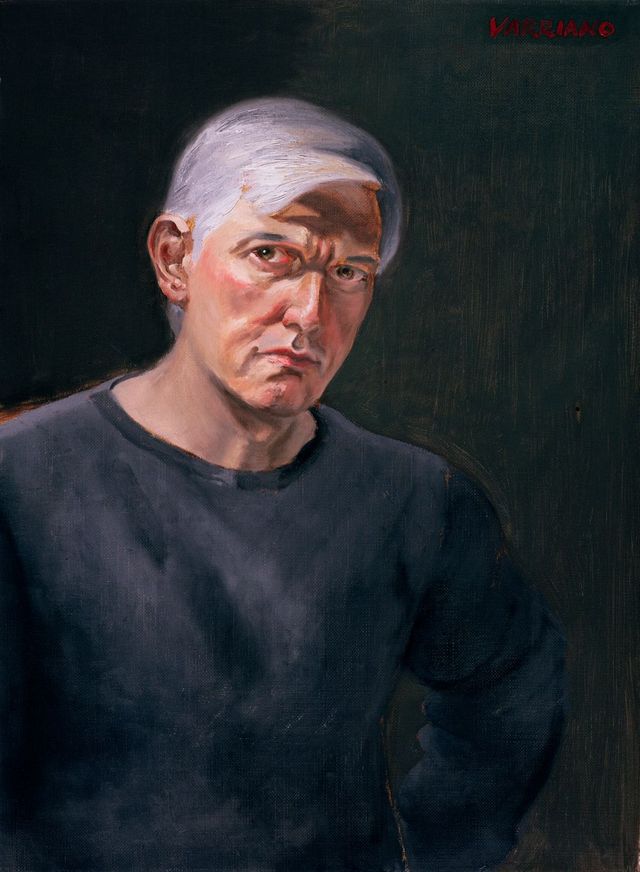Why Figurative Oil Painting Remains a Classic Option for Artists
Why Figurative Oil Painting Remains a Classic Option for Artists
Blog Article
The Duty of Emotion and Expression in Figurative Oil Painting: A Thorough Analysis of Topic Matter and Composition
The interplay of feeling and expression in metaphorical oil painting offers as an essential lens with which one can check out the detailed relationship in between subject matter and composition. Artists harness different methods, from color selection to brushstroke characteristics, to cultivate psychological vibration within their jobs.
Comprehending Feeling in Art
Feeling in art functions as a powerful conduit for expression, enabling artists to communicate intricate sensations with their work. In metaphorical oil painting, this psychological depth is frequently portrayed through the depiction of the human figure, capturing the nuances of human experience. The choice of subject issue, color palette, and brushwork all add to the psychological vibration of an item.
Artists regularly draw upon individual experiences, societal problems, or global styles to evoke sensations in the audience. A picture may mirror susceptability, while a vibrant figure in motion can represent freedom or turmoil. These psychological threads link the audience to the artwork, promoting a discussion that transcends the aesthetic tool.
Furthermore, the interplay in between light and darkness can magnify emotional intensity, directing the visitor's stare and accentuating certain aspects within the structure. Using appearance in oil paint additionally adds layers of complexity, inviting a responsive feedback that enhances the emotional experience. Generally, understanding feeling in art is vital for valuing the subtleties that characterize metaphorical oil painting, as it transforms plain depiction into a profound exploration of the human condition.
Secret Aspects of Composition
In the world of metaphorical oil painting, the structure works as the underlying framework that arranges aesthetic elements and boosts the psychological narrative. Crucial parts of composition consist of balance, contrast, prime focus, and rhythm, each adding to the general effect of the artwork.
Equilibrium describes the distribution of visual weight within the paint, which can be accomplished with symmetrical or asymmetrical plans. A healthy composition provides stability, permitting the visitor to involve with the item sympathetically - figurative oil painting. Contrast, on the other hand, involves comparing various aspects, such as dark and light or cozy and awesome colors, to guide the visitor's eye and stimulate emotional reactions
The focal factor is critical, as it routes attention to the most significant component of the paint, frequently highlighting the emotional core of the narrative. By skillfully integrating these key components, musicians can craft emotionally powerful and compelling figurative oil paints that mesmerize and involve their target market.
Topic and Its Impact
Topic plays an essential duty in figurative oil painting, as it not only works as the foundation for the story but additionally shapes the visitor's interpretation and psychological interaction with the art work. The option of topic-- be it a solitary number, a group dynamic, or a thematic depiction-- directly affects the emotional ambience shared to the audience.

For example, pictures frequently evoke personal connections, disclosing the intricacies of human expression and personality, while scenes illustrating common activities can create a feeling of belonging or fond memories. The social and historical context of the subject issue enriches the customer's understanding, motivating much deeper representations on social standards, worths, and the human condition.
Different topics additionally create varying levels of engagement; a remarkable dispute depicted with figures in tension might generate feelings of stress and anxiety or compassion, while calm landscapes can conjure up serenity and consideration. Eventually, the influence of subject issue in metaphorical oil paint is extensive, as it serves as a conduit for psychological resonance, assisting the visitor's reaction and interpretation, and promoting a connection in between the observer and the art work. This interaction is important for the successful interaction of the musician's intent.
Techniques for Evoking Sensations
The efficiency of metaphorical oil painting in sharing feelings is significantly affected by the methods used by the artist. One of one of the most important approaches is the usage of color concept, where Check This Out the critical option of colors can evoke specific psychological actions. Warm colors, such as reds and oranges, commonly evoke sensations of enthusiasm or aggressiveness, while cooler tones like blues and greens tend to stimulate peace or unhappiness.
Another crucial method is the manipulation of light and darkness, understood as chiaroscuro. This technique enhances the three-dimensionality of figures, producing dramatic contrasts that can magnify psychological depth. The positioning of light can direct viewers' feelings, highlighting specific aspects of the structure.
Brushwork additionally plays a crucial duty; loose, expressive strokes can communicate energy and spontaneity, whereas smoother techniques could suggest harmony or precision. The plan of topics within the structure can affect psychological effect. Close closeness can recommend affection, while range may suggest seclusion.
Inevitably, the combination of these strategies allows artists to craft stories that resonate with the viewer, transforming a simple visual experience into an expressive emotional journey. - figurative oil painting

Instance Research Studies of Notable Works
Checking out significant jobs of metaphorical oil painting discloses how various strategies are employed to evoke effective emotions. One excellent situation is Edvard Munch's "The Scream," where the altered figure and swirling history convey existential fear. Munch's use shade-- dazzling oranges and deep blues-- heightens the psychological impact, showcasing how palette choices can shape customer experience.
An additional substantial job is Pablo Picasso's "Les Demoiselles d'Avignon." Here, bold brushstrokes and fragmented types mirror a troubled psychological landscape, challenging typical depictions of the women figure. Picasso's innovative make-up not only records the viewer's focus however likewise invites contemplation on styles of identity and sexuality.
Furthermore, Frida Kahlo's "The 2 Fridas" uses a poignant exploration of duality and self-identity. The contrasting numbers, connected by a common heart, exemplify Kahlo's emotional depth and individual story. figurative oil painting. Her meticulous focus to information and symbolic components offer to involve customers on a visceral level
These study emphasize the extensive connection in between emotion and make-up in metaphorical oil paint, revealing how musicians harness technique to communicate complicated feelings and narratives that reverberate across time and society.

Verdict
In conclusion, the interaction of emotion and expression in metaphorical oil painting considerably enhances the audience's experience and analysis of the artwork. Through a careful choice of topic and compositional techniques, artists share extensive narratives that resonate on both personal and global degrees. The application of color chiaroscuro, brushwork, and theory additional magnifies psychological depth, transforming each canvas into a powerful representation of the complexities of the human experience.
In metaphorical oil paint, look these up this psychological deepness is commonly depicted with the representation of the human number, capturing the nuances of human experience.In addition, the interaction in between light and shadow Full Report can intensify psychological intensity, assisting the viewer's stare and attracting focus to particular aspects within the composition. The usage of appearance in oil paint even more adds layers of intricacy, inviting a responsive reaction that enhances the emotional experience.The focal factor is crucial, as it routes focus to the most considerable component of the painting, typically highlighting the psychological core of the narrative. Ultimately, the impact of subject issue in figurative oil paint is profound, as it serves as a channel for psychological vibration, guiding the customer's response and interpretation, and fostering a connection in between the art work and the observer.
Report this page